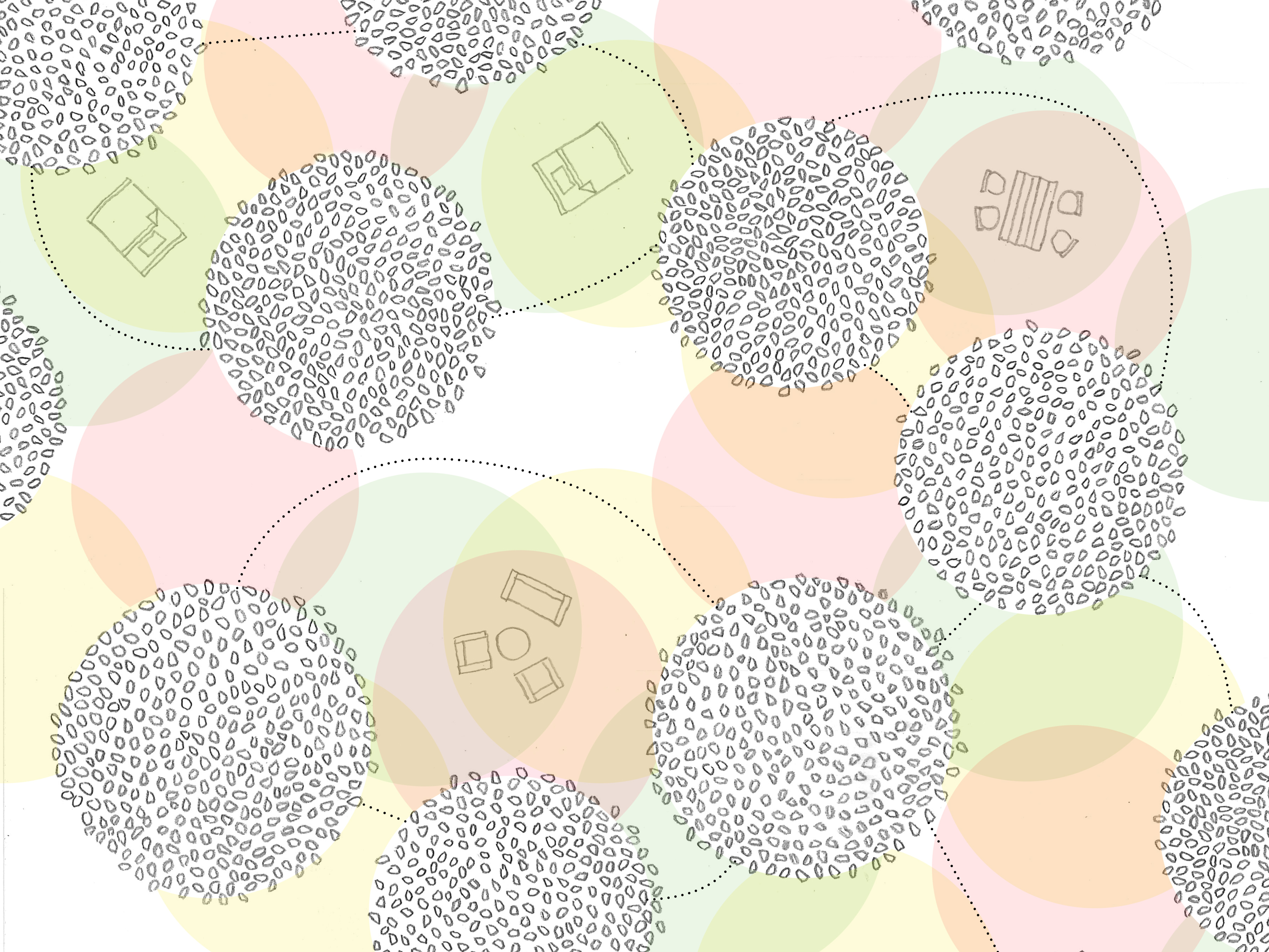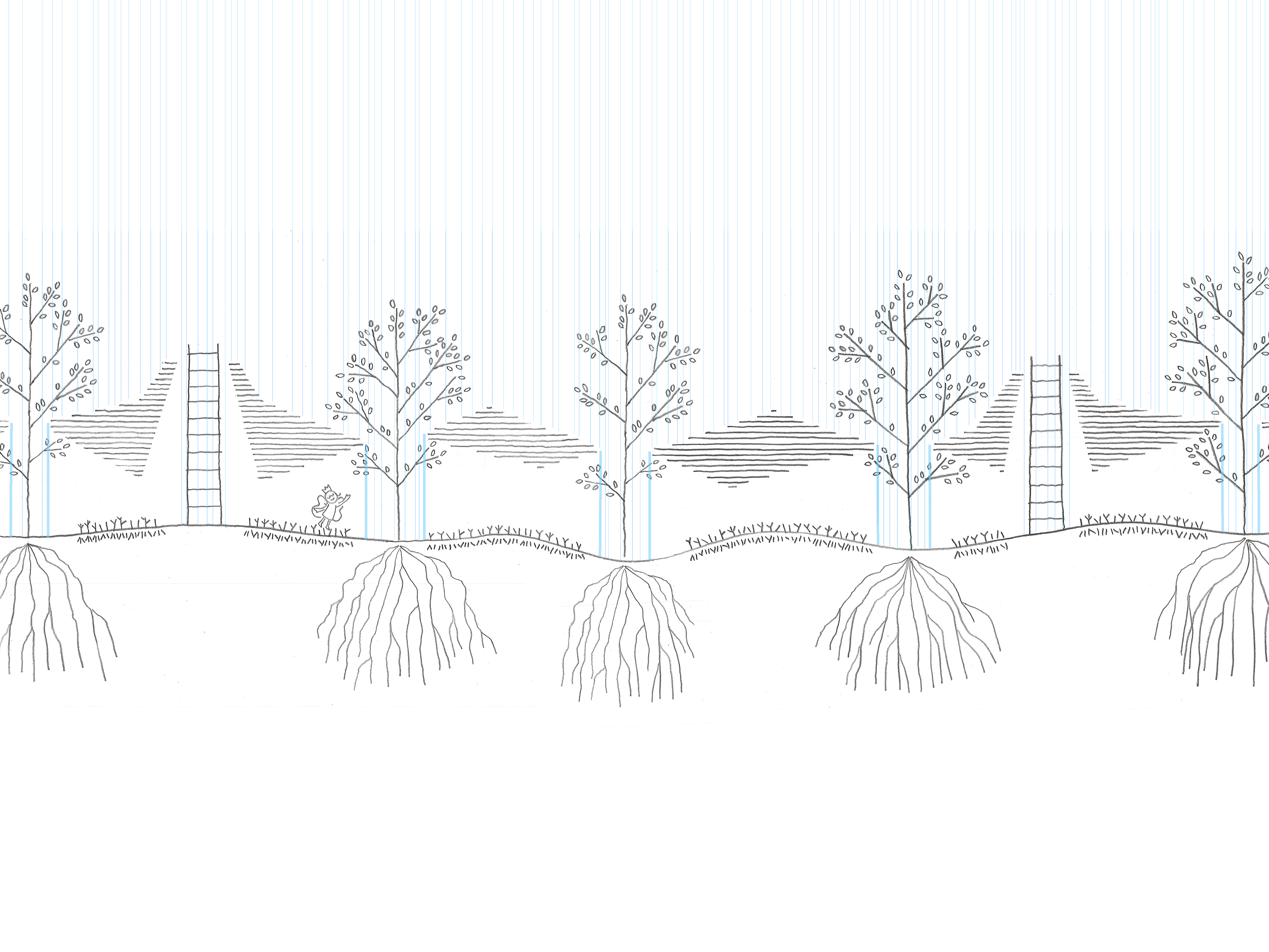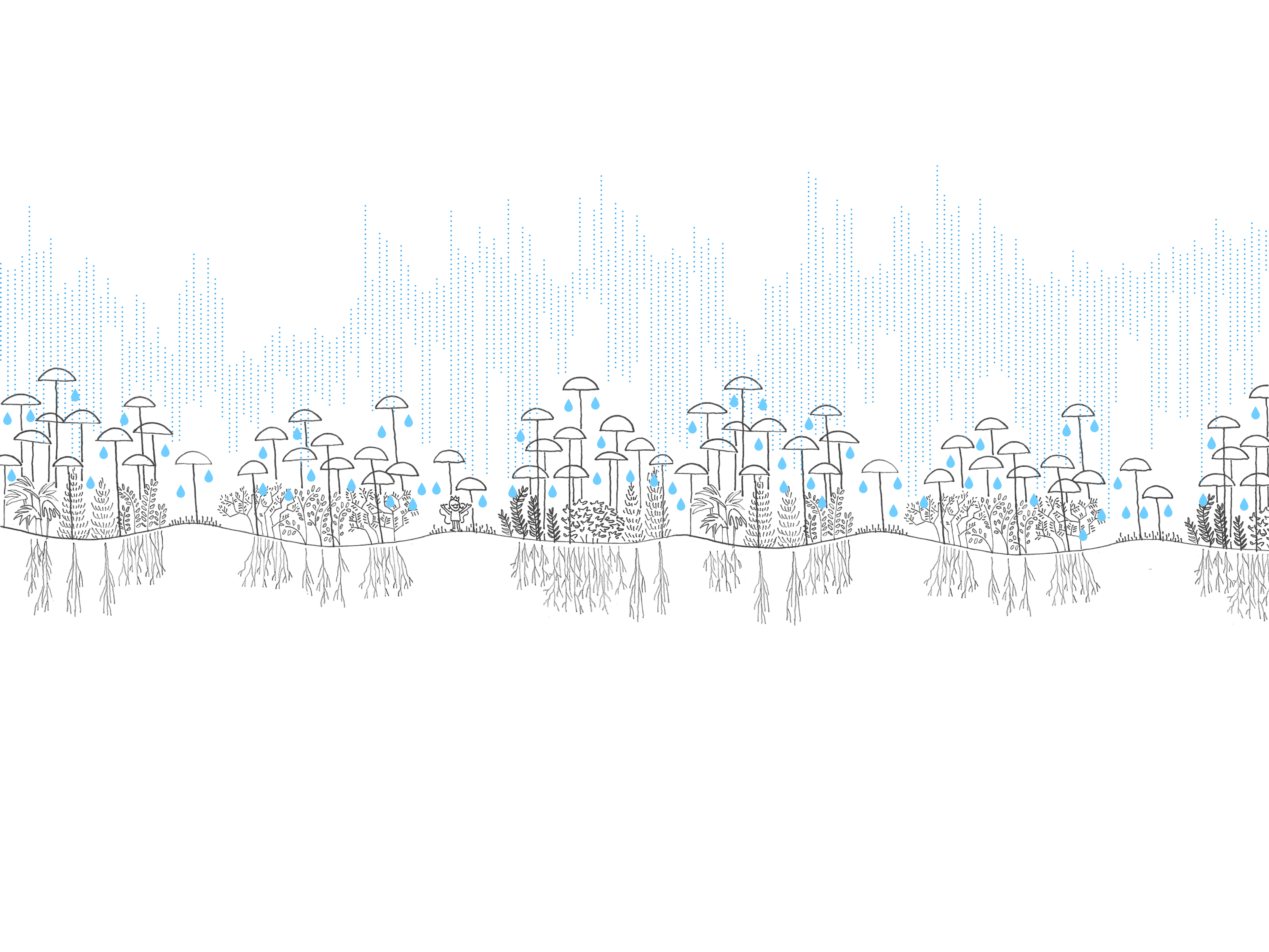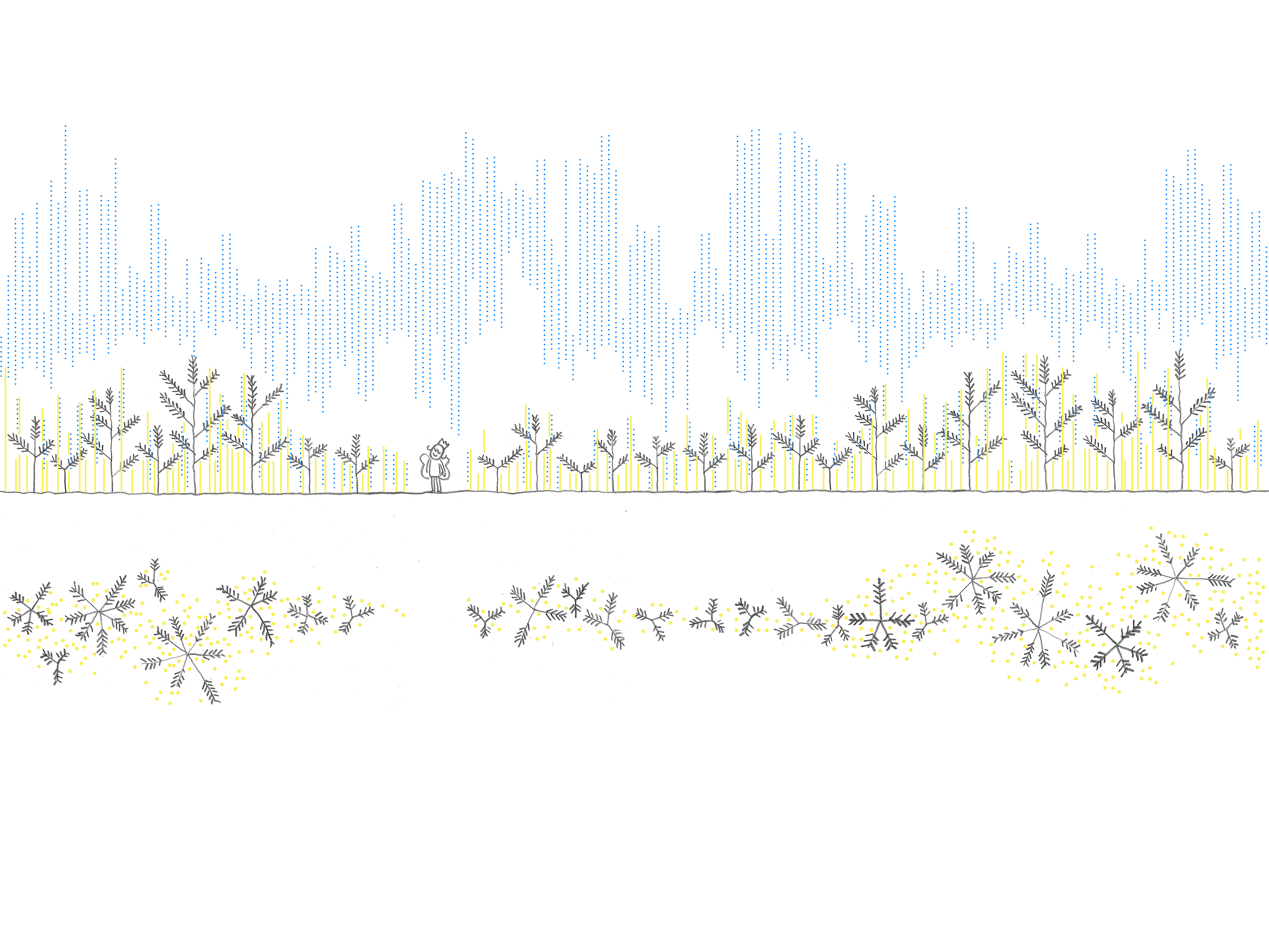





Fairy gardens are generally comprised of live plant material and fairy garden accessories (i.e. fairy figurines, tiny houses, little gates and fences, and petite furniture) to create an environment at a miniature scale for its imagined fairy residents. Lecturer Tajima was motivated to design fairy gardens because they have a unique capacity to be conceived at multiple scales simultaneously. Like fairies, the fairy scale is strange and magical. The gardens are created at 1:1 fairy scale. However, they are also to be enjoyed purely for its 1:1 planting design AND can serve as a scaled model for imagining new landscapes and architecture for human beings. According to her research, fairies range in height from 2 ½” to 3” so fairy gardens can be perceived at approximately ½” = 1’-0”.